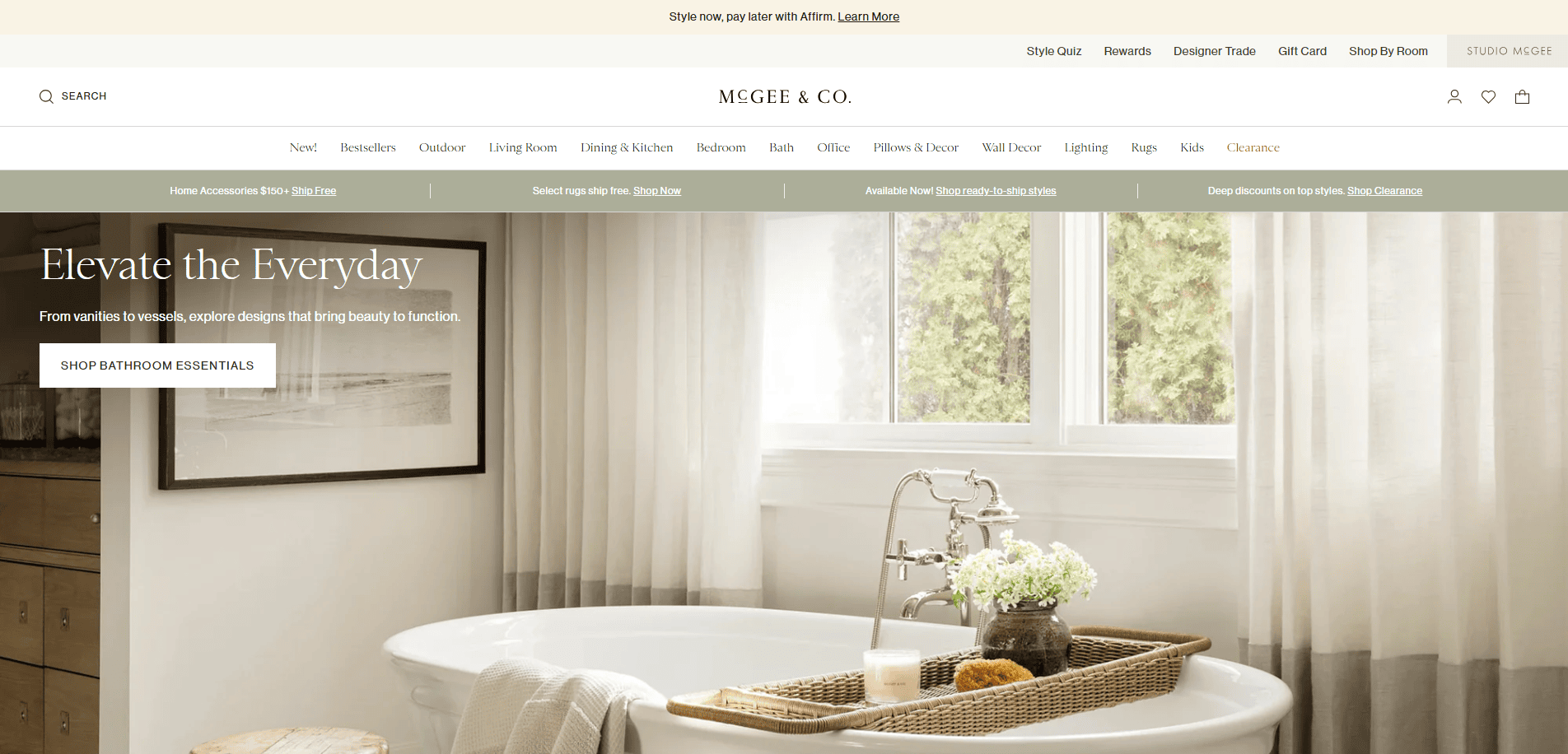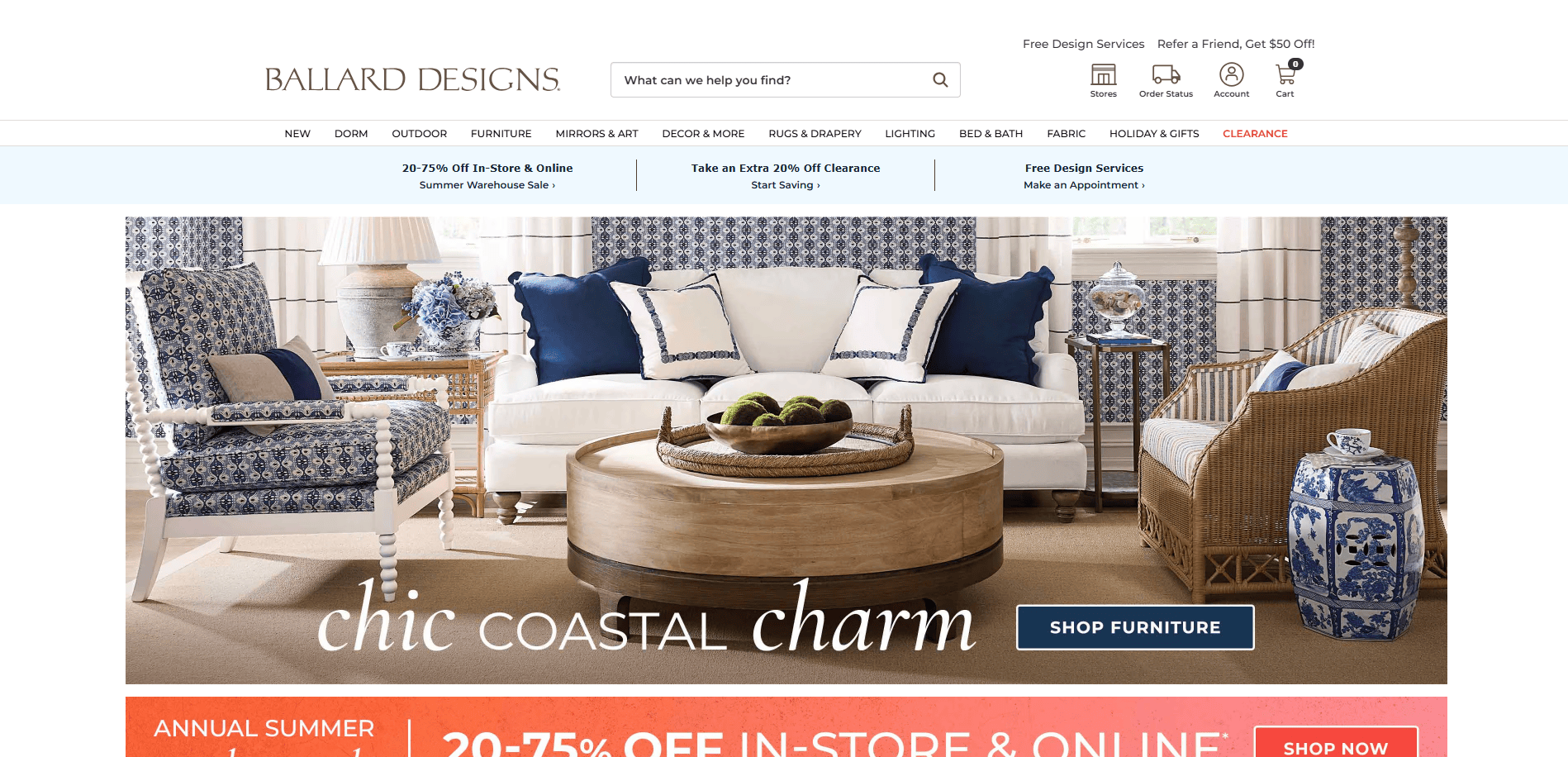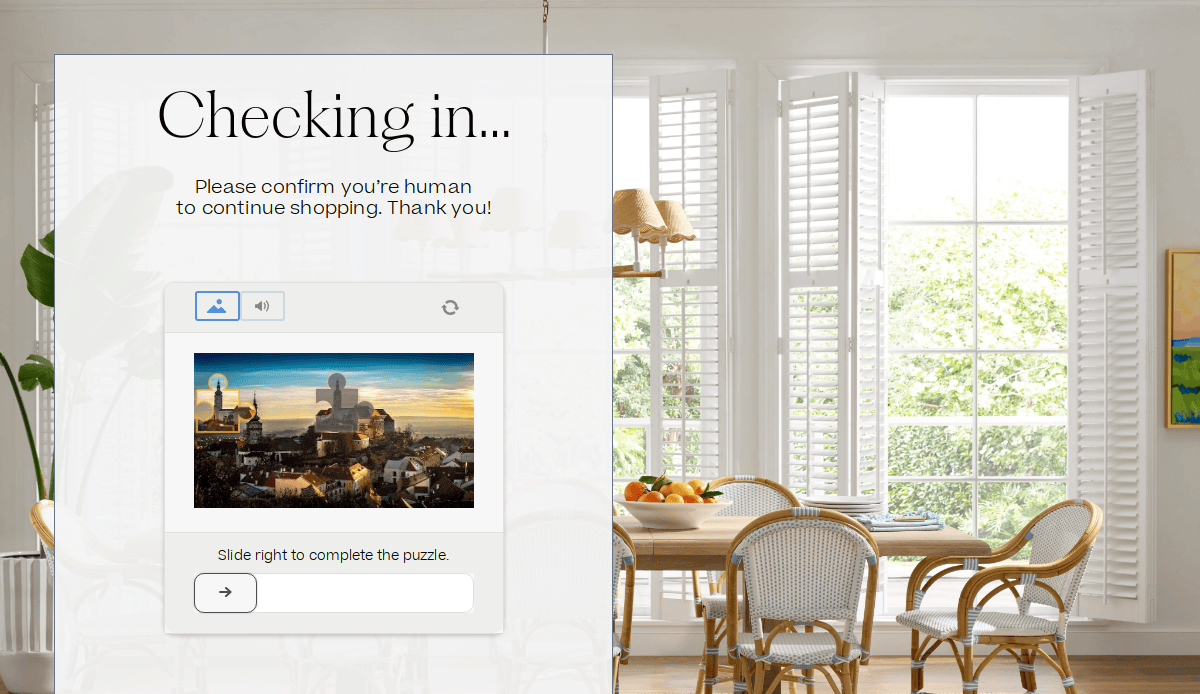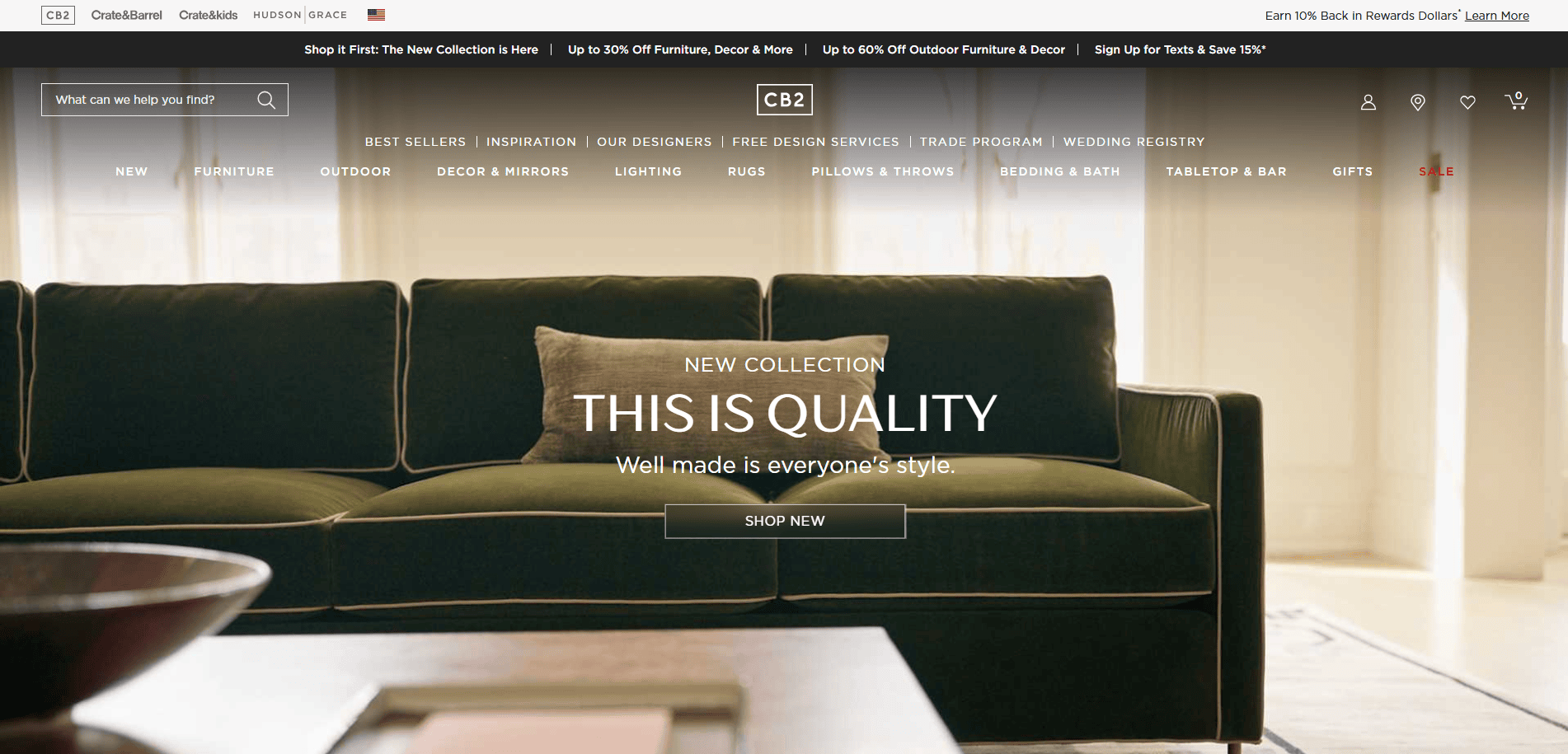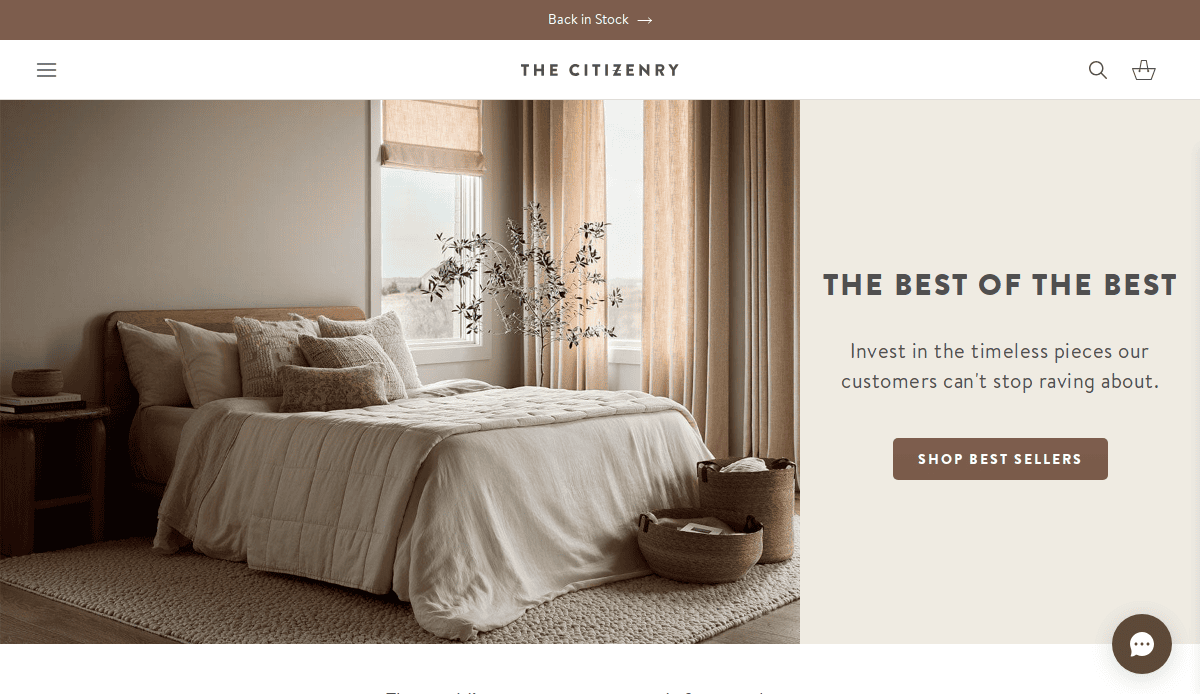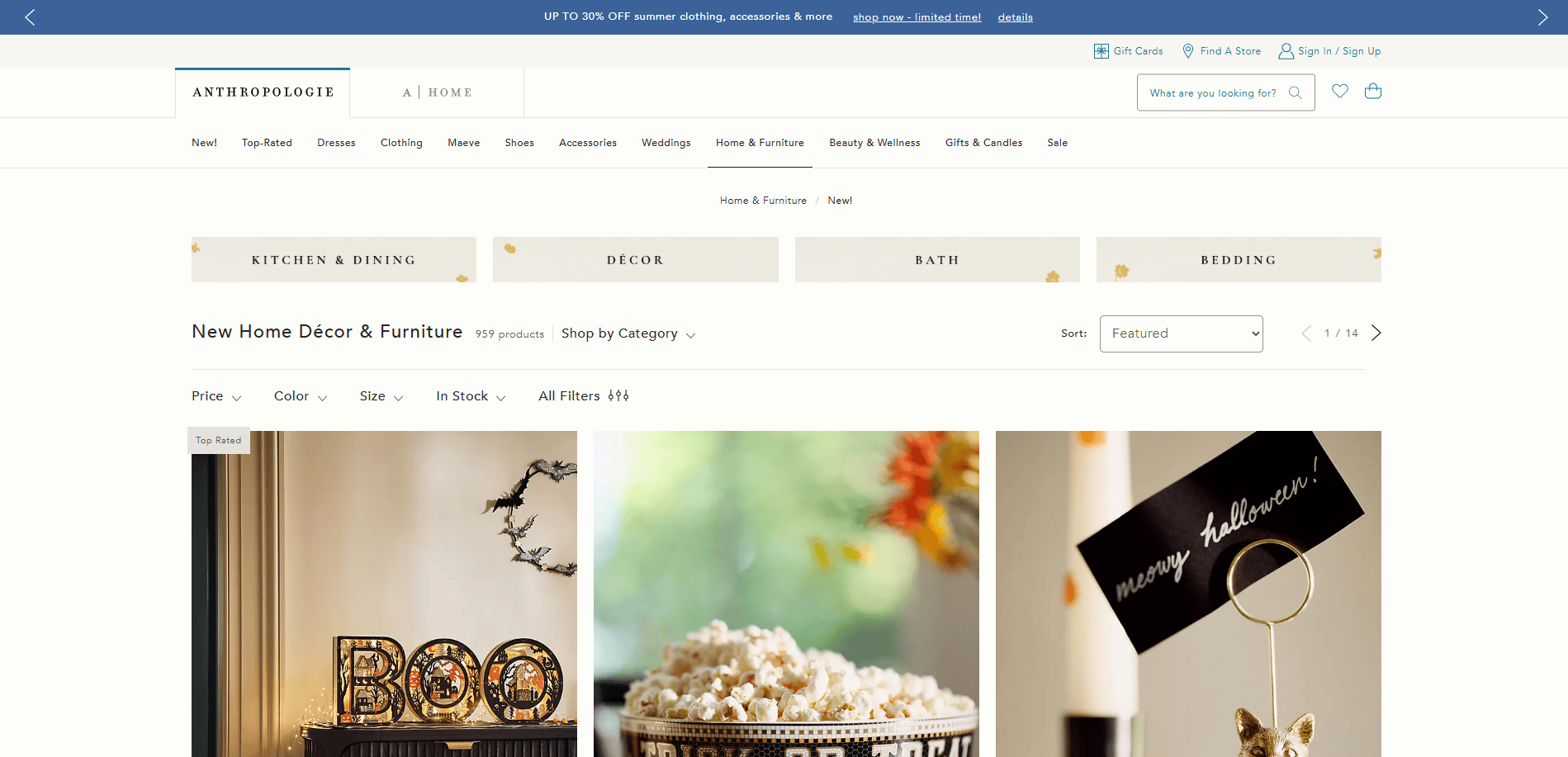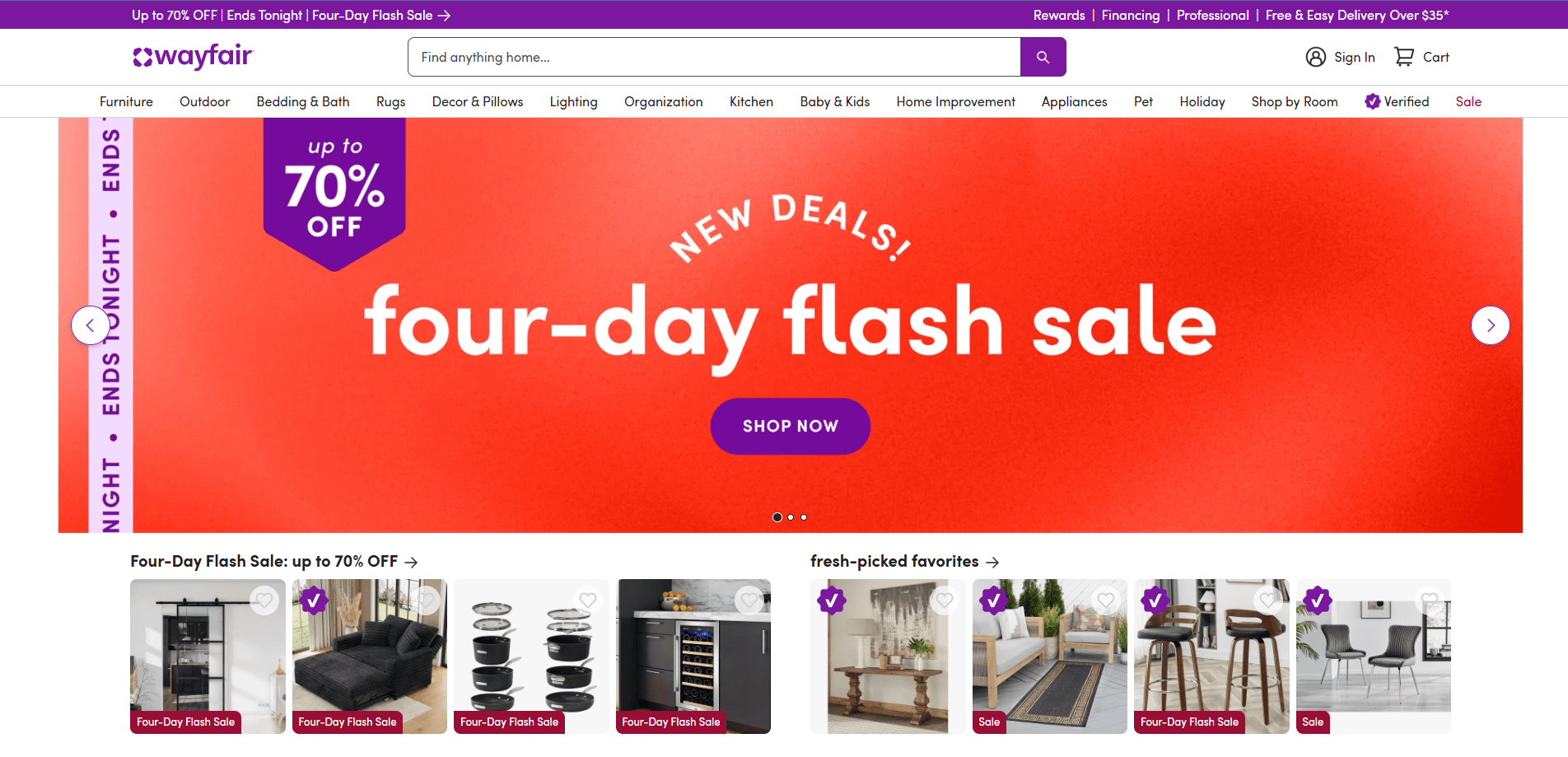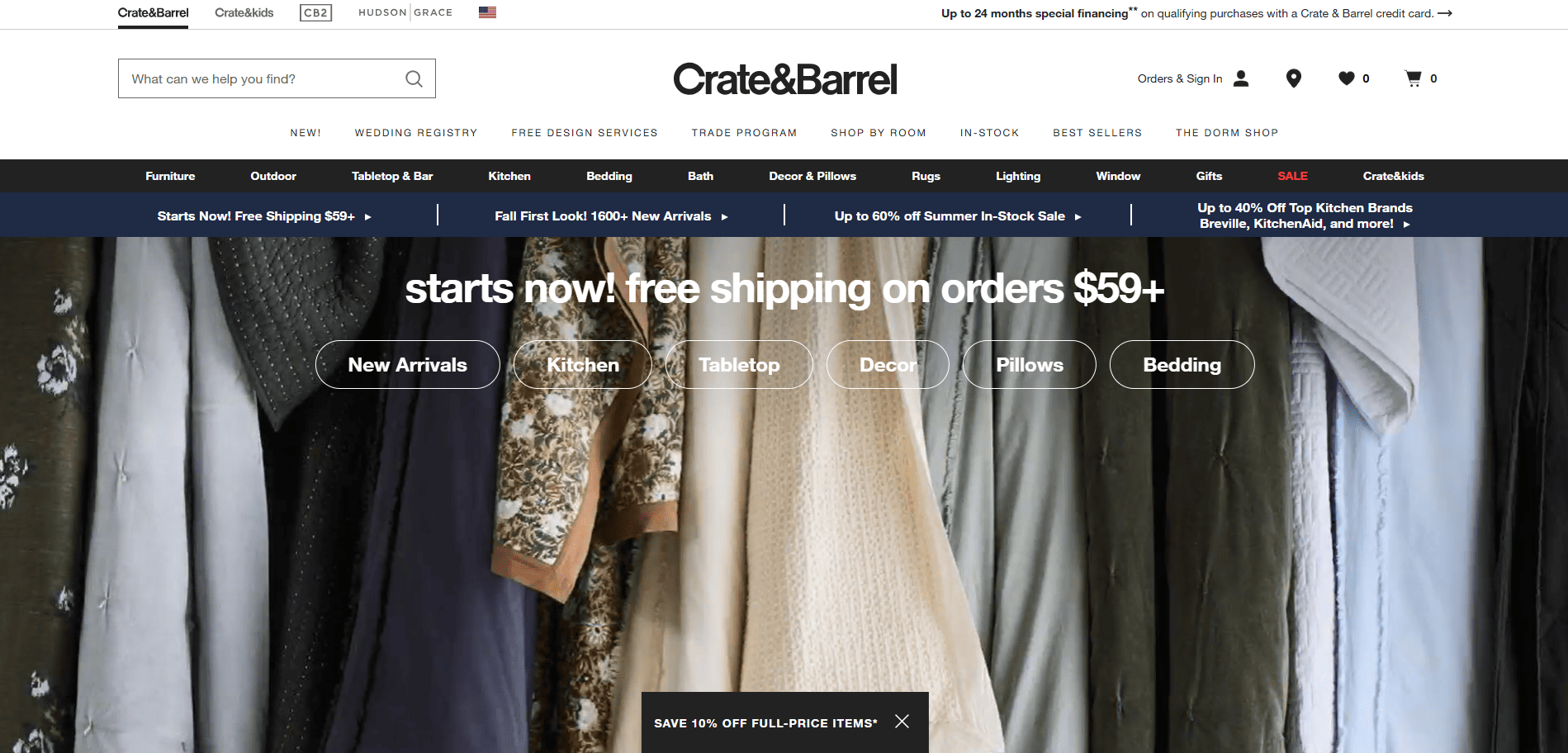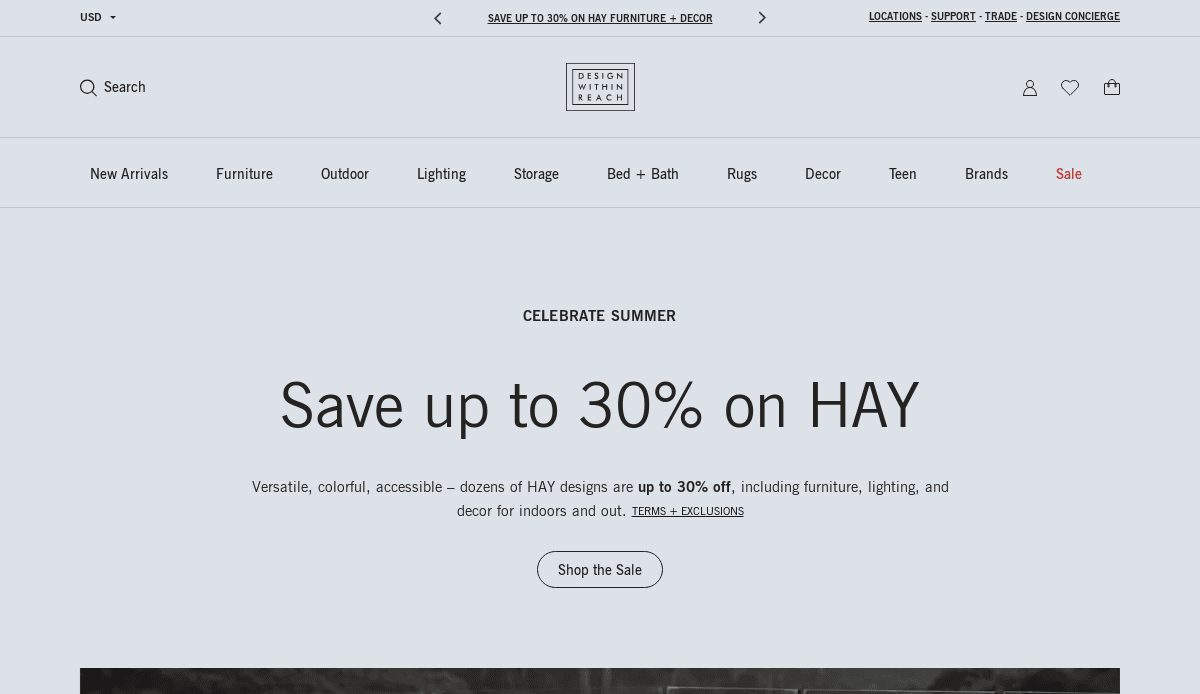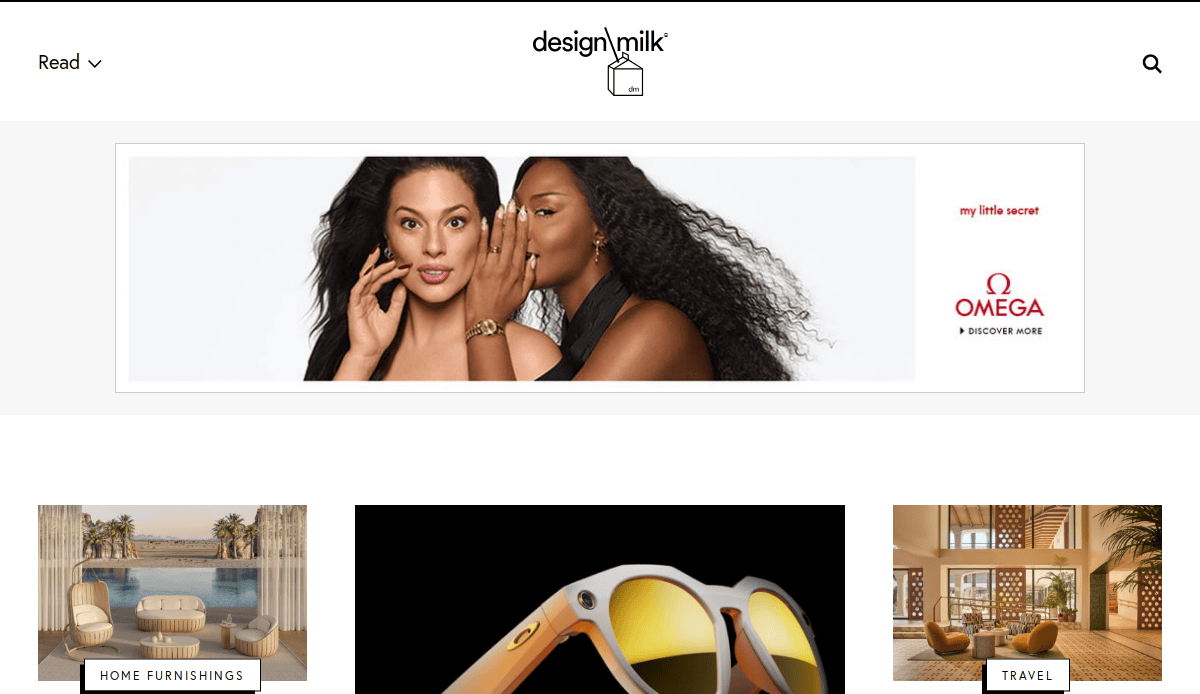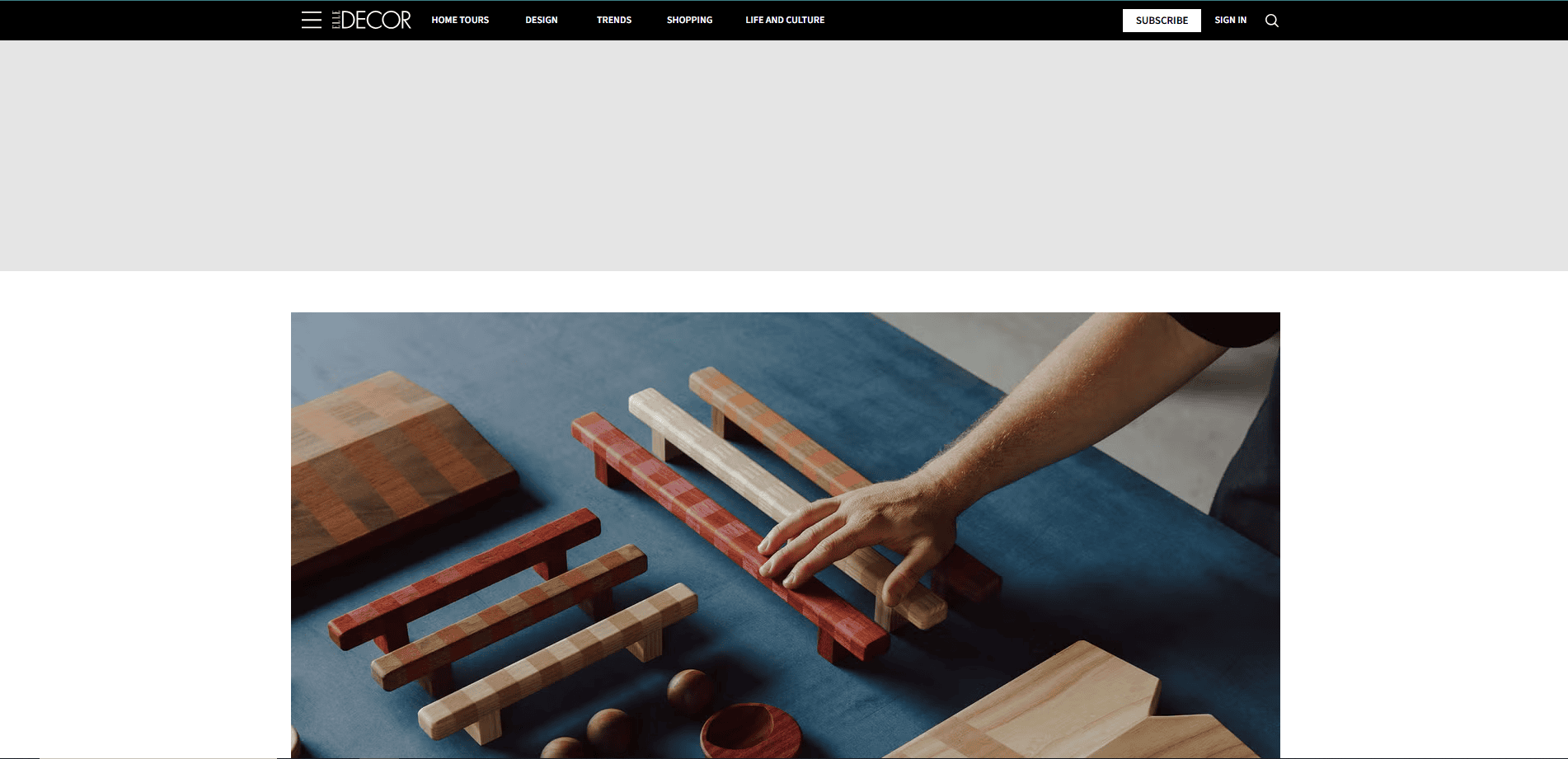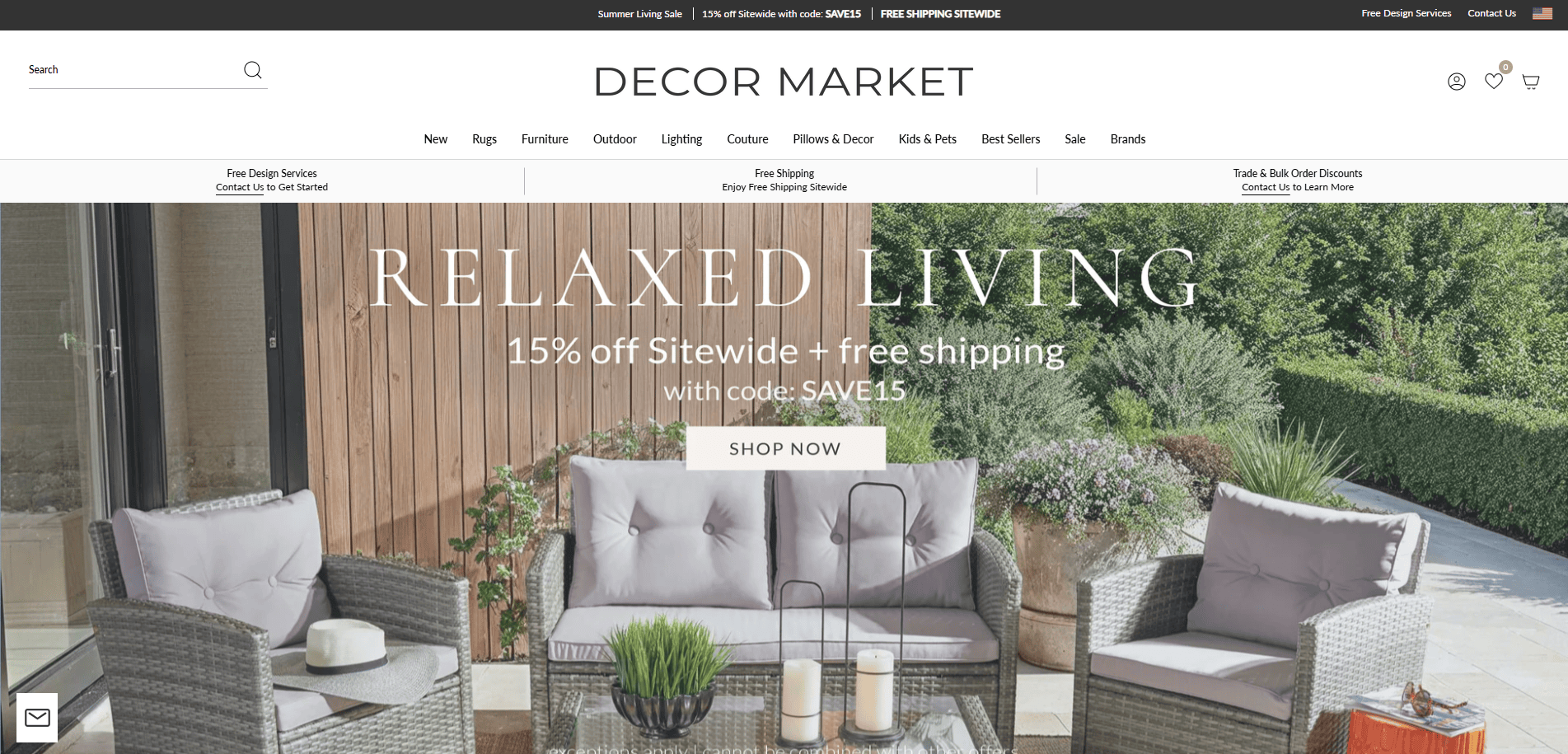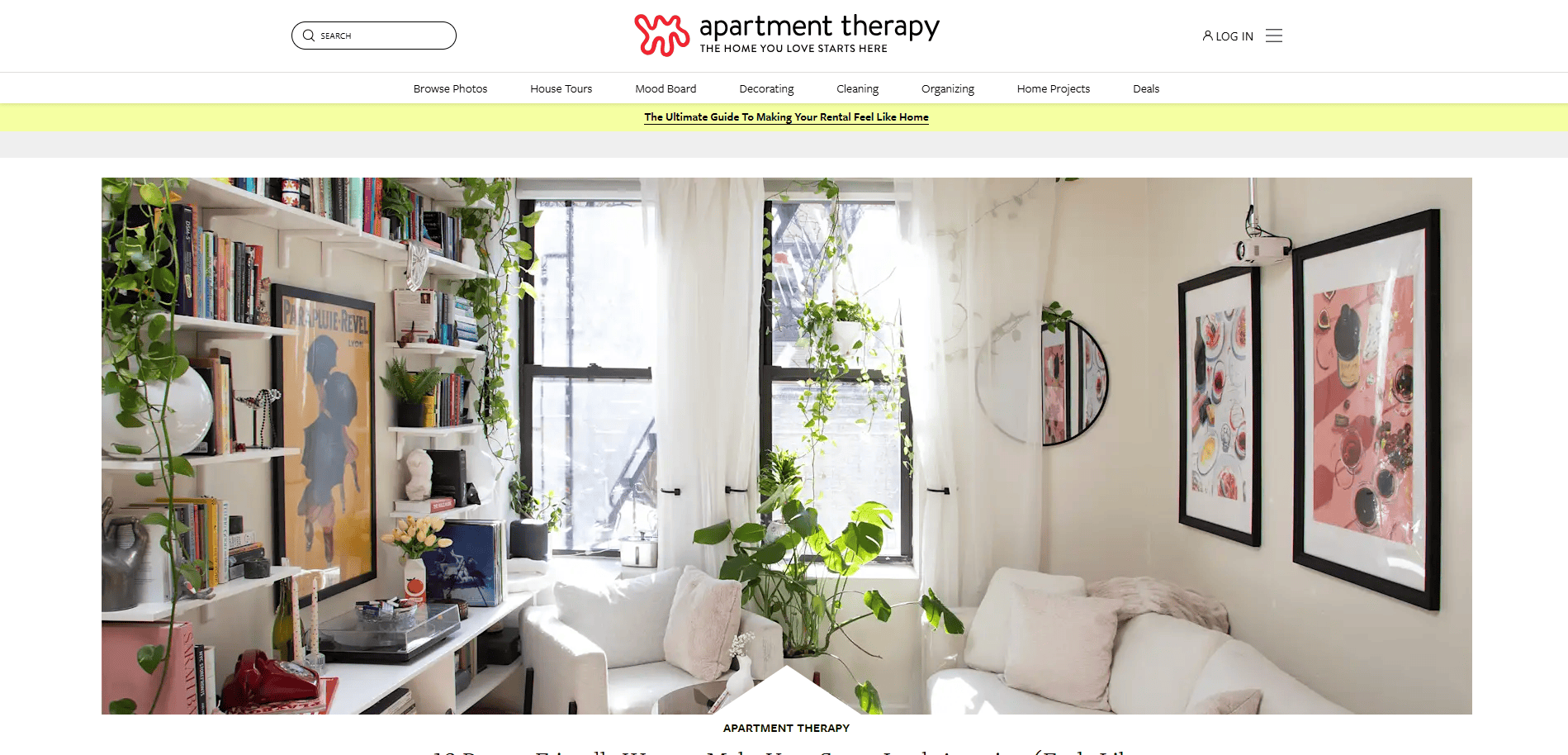Just looking for our Best Home Decor Website examples list?
Key Takeaways:
Designing an effective home decor website in 2025 requires a blend of aesthetic appeal, user-centric functionality, and strategic SEO practices. Here are the essential takeaways to guide your website development:
1. Prioritize Visual Storytelling
High-quality, contextual imagery is paramount. Showcasing products within real-life settings helps customers visualize items in their own spaces, enhancing engagement and conversion rates.
2. Ensure Mobile-First Responsiveness
With a significant portion of users shopping via mobile devices, your website must offer seamless navigation, quick load times, and optimized layouts for smaller screens to retain and convert visitors.
3. Integrate AI for Personalized Experiences
Utilizing AI can enhance user experience through personalized product recommendations and efficient visual search capabilities, aligning offerings with individual customer preferences.
4. Optimize for SEO and AI Overviews
Crafting content that is clear, authoritative, and structured increases the likelihood of being featured in AI-generated search summaries, thereby improving visibility and driving organic traffic.
5. Simplify the Checkout Process
A streamlined, intuitive checkout experience reduces cart abandonment rates. Implementing clear calls-to-action and minimizing steps can significantly enhance conversion rates.
6. Incorporate Social Proof
Displaying customer reviews, testimonials, and user-generated content builds trust and credibility, influencing purchasing decisions.
7. Maintain Consistent Branding
Consistency in logos, color schemes, typography, and messaging across your website reinforces brand identity and fosters customer loyalty.
8. Utilize Strategic Internal Linking
Implementing a well-structured internal linking strategy enhances user navigation and distributes page authority, benefiting overall SEO performance.
By focusing on these key areas, your home decor website can provide an engaging user experience, stand out in search engine results, and effectively convert visitors into customers.
Why a Great Home Decor Website Design Can Make or Break Your Business
It’s overwhelmingly clear that today, a website isn’t just a virtual storefront—it’s your most valuable asset for attracting new clients, building trust, and driving revenue. For interior designers and home decor businesses, a high-performing website does more than display pretty images. It must embody your brand, communicate your value, and make it easy for visitors to take action.
Whether you’re launching a new interior design service or refreshing an outdated platform, your website is your first impression. Potential clients are searching online before they ever make a call or visit a showroom. If your home decor website feels generic, loads slowly, or lacks personality, you’re not just losing attention—you’re losing business.
This guide will walk you through every element needed to design sites that truly perform. From layout and structure to the use of visual storytelling and curated templates, we’ll help you create a website that amplifies your work, strengthens your brand, and converts visitors into clients. Let’s explore how thoughtful site design can elevate your interior brand and transform your online presence into a powerful growth engine.
Website Planning & Purpose: Laying the Foundation for Your Site
Before diving into colors, fonts, or images, successful site design begins with strategic planning. For professionals, it’s the clarity on the website’s purpose that’s most essential. Perhaps your goal is to generate leads, share a portfolio, sell items, or educate clients about your process? The answers will guide every design and functionality decision that follows.
Professionals must approach their website with the same intentionality they bring to client projects. A cohesive structure, intuitive navigation, and compelling visuals start with understanding your business model and customer journey. Do you want potential clients to schedule consultations, purchase products, or browse project galleries? Prioritize those user paths from the start.
Equally important is mapping your content. Pages like About, Services, Portfolio, and Contact may seem standard, but each should reflect your unique brand and speak directly to your ideal client. If you sell items for home decoration online, ensure your e-commerce functionality is seamless and mobile-friendly. If you offer consultations, simplify the booking process.
For those starting from scratch or redesigning, curated website templates can serve as a solid foundation. However, avoid a cookie-cutter look. Customize elements to reflect your personality and the spaces you design. Whether your goal is to create a home-inspired blog or a conversion-driven business site, your planning phase should be focused, intentional, and aligned with your long-term goals.
A well-planned website doesn’t just look beautiful—it performs. It guides visitors effortlessly, reinforces your expertise, and ultimately helps you grow your brand with confidence.
Design Principles: The Core Elements of a High-Performing Website
Every great website starts with strong foundational principles that marry form and function. In a visual-driven industry, aesthetics alone are not enough. The site must also be intuitive, responsive, and conversion-focused. Here are the core design principles every interior designer or home decor brand should prioritize:
1. Visual Hierarchy
A clear visual hierarchy ensures that the most important elements—like your services, calls-to-action, and contact details—stand out at a glance. Use intentional sizing, spacing, and contrast to guide your visitor’s eye through the page. Keep content organized and uncluttered so users can absorb information quickly.
2. Consistent Branding
From the logo to the font pairings, every design element should reflect your unique aesthetic. Interior designers who express their brand personality through color palettes, tone, and layout create a stronger emotional connection with potential clients. Consistency builds trust and reinforces credibility.
3. Whitespace and Balance
Whitespace isn’t wasted space—it’s a design tool that emphasizes clarity and elegance. Effective use of white or negative space gives your content breathing room, allowing key visuals and messages to shine. Balanced layouts prevent your website from feeling cramped or overwhelming.
4. Mobile Responsiveness
Over 50% of website traffic comes from mobile devices. If your interior design website isn’t responsive, you’re likely losing business. Ensure that your design adapts seamlessly across smartphones, tablets, and desktops. Every button, form, and image must function beautifully on all screen sizes.
5. User-Friendly Navigation
Visitors should know exactly where to go from the moment they land on your homepage. Limit your top navigation to essential pages like Home, Portfolio, Services, and Contact. Use dropdown menus sparingly and ensure all clickable items are easy to find and use.
6. Compelling Imagery
Your design work is your biggest selling point. Use high-resolution photos that capture the detail and essence of your interior spaces. Avoid stock photos whenever possible. Let your real projects speak for themselves by showcasing full-room shots, before-and-after transformations, and close-ups of curated decor.
7. Accessibility
ADA compliance isn’t just a best practice—it’s a necessity. Ensure your site can be navigated by all users, including those with disabilities. This includes using readable fonts, adding alt text to images, maintaining color contrast, and structuring content for screen readers.
By applying these essential design principles, you lay the groundwork for a website that is visually appealing and drives engagement, builds trust, and converts visitors into clients. A beautiful interior design website should reflect the same care, functionality, and elegance you bring to every space you transform.
Content & Navigation: Structuring for Simplicity and Impact
A successful website doesn’t just look good—it’s structured to guide visitors through a seamless and intuitive journey. The way your content is presented and how users navigate your site are just as important as your color scheme or photography. As a highly visual industry, your content should be clear, concise, and strategically placed to move users toward your most valuable actions.
Start with a clear sitemap. For most home decor or interior design businesses, the essential pages include Home, About, Services, Portfolio, Blog, and Contact. Each of these should serve a distinct purpose:
- The Home page should immediately communicate your value proposition and exhibit standout projects or services.
- The About page builds trust by sharing your story, design philosophy, and credentials.
- The Services page must clearly outline what you offer—whether that’s full-service interior design, virtual consultations, or product sourcing.
- The Portfolio should be image-rich, well-organized, and include project descriptions to tell the story behind each space.
- The Blog is where you can share design tips, trends, and client stories—helpful for SEO and authority building.
- The Contact page should be simple, accessible, and offer multiple ways to connect, including embedded forms, phone numbers, and social links.
Navigation should be frictionless. Use a top navigation bar with no more than 5–7 primary links to keep things focused. Avoid overwhelming dropdown menus. Include a sticky header or back-to-top feature for ease of movement, especially on longer pages.
Every content block should have a clear purpose—educate, inspire, or convert. Use headings to break up sections, bullet points for readability, and calls-to-action that make it easy for users to take the next step. Internal linking is also key; guide users to related blog posts, featured projects, or service pages to keep them engaged.
By aligning content and navigation with user expectations and business goals, your website becomes not just beautiful, but functional, persuasive, and results-driven.
Visual Elements: Creating an Immersive Brand Experience
When it comes to modern websites, visuals are everything. They are the first thing a visitor notices and often the deciding factor in whether someone chooses to stay or leave your website. More than decoration, visual elements shape how users perceive your brand, interact with your content, and make decisions about your services.
Your images must reflect the quality and aesthetic of your work. Use professional photography that captures full-room perspectives, intricate details, and the overall mood of your projects. Avoid busy collages or overuse of filters—clarity and realism always win. Each photo should serve a purpose, whether it’s showcasing your signature style, a specific design solution, or a before-and-after transformation.
Typography is another critical visual component. Choose fonts that are clean, readable, and reflective of your brand’s personality. Pair serif fonts with modern sans-serif styles to convey both elegance and professionalism. Font sizes should vary to create hierarchy, with headlines drawing attention and body text supporting easy reading.
Color schemes must align with your brand identity. Whether you use soft neutrals, bold contrasts, or muted pastels, your palette should be consistent across the entire site. Color also influences emotion—warm tones can feel welcoming, while cool shades can evoke calm. Use color intentionally to support your message and visual harmony.
Icons, buttons, and graphic elements should enhance navigation without distracting from the core message. For example, use simple icons to indicate services or categories, and design buttons that stand out without clashing with the rest of the layout. Every element must feel like a natural extension of the page.
Whitespace plays a supporting role in bringing all visual elements together. Strategic use of space between photos, text blocks, and design elements prevents visual clutter and increases comprehension. It gives your content room to breathe and emphasizes the sophistication of your design.
When implemented thoughtfully, visual elements do more than look good—they communicate expertise, build brand recognition, and guide users through a well-orchestrated experience that mirrors the care and precision you bring to every project.
Ongoing WordPress Maintenance: Keeping Your Site Running Smoothly
A beautiful, functional website is only the beginning. For professional businesses using WordPress, ongoing maintenance is essential to ensure your site stays fast, secure, and reliable. Without proper upkeep, even the most well-designed site can quickly become vulnerable to performance issues, broken features, or security risks.
WordPress is a dynamic platform that requires regular updates to its core software, themes, and plugins. These updates often include critical security patches and performance improvements. Ignoring them can leave your website exposed to hackers or cause compatibility issues that break design elements and site functionality.
Backups are another vital part of ongoing maintenance. A regular backup schedule ensures that your content, images, and customizations are preserved in case of a system failure, malware attack, or accidental error. For home decor businesses showcasing large image portfolios and product galleries, a lost website can mean a significant setback in visibility and sales.
Speed optimization is equally important. As you add new images, content, or integrations, your site may slow down. Routine performance audits, image compression, and database cleanups help keep load times fast and the user experience smooth, especially important for mobile visitors browsing galleries or booking design consultations on the go.
Security monitoring tools should be active at all times. A compromised site can damage your reputation and drive away potential clients. Tools like firewalls, malware scanners, and uptime monitoring help protect your digital presence and alert you to any suspicious activity before it becomes a serious issue.
Partnering with a professional team for website maintenance can be a smart move for interior design professionals who would rather focus on client work than technical details. A well-maintained WordPress website supports your business today, ensures that your digital foundation is strong, scalable, and ready for long-term growth.
Best Home Decor Website Design Examples
1. McGee & Co.
Location: Salt Lake City, UT
Key Takeaways:
- Clean, modern design with intuitive navigation.
- Sophisticated filtering system for product discovery.
- Consistent visual branding across all touchpoints.
2. West Elm
Location: Brooklyn, NY
Key Takeaways:
- Contemporary furniture designs with a cohesive aesthetic.
- User-friendly online shopping experience.
- Integration of editorial content for design inspiration.
3. Arhaus
Location: Boston Heights, OH
Key Takeaways:
- Upscale home furnishings with sustainable materials.
- High-quality imagery showcasing products in real settings.
- Detailed product descriptions enhancing user confidence.
4. Ballard Designs
Location: Atlanta, GA
Key Takeaways:
- European-inspired home furnishings with customizable options.
- Interactive design tools for personalized spaces.
- Comprehensive product categories for diverse needs.
5. Remodelista
Location: New York, NY
Key Takeaways:
- Editorial-style content focusing on minimalist design.
- Curated product selections with expert recommendations.
- Seamless integration of blog and shopping experiences.
6. Serena & Lily
Location: Sausalito, CA
Key Takeaways:
- Coastal-inspired designs with a fresh, airy aesthetic.
- Room-specific shopping guides for targeted browsing.
- High-resolution imagery enhancing product appeal.
7. CB2
Location: Chicago, IL
Key Takeaways:
- Modern furniture and decor with bold designs.
- Interactive room planners for space visualization.
- Collaborations with contemporary designers.
8. The Citizenry
Location: Dallas, TX
Key Takeaways:
- Artisan-crafted home goods with global influences.
- Transparent sourcing and storytelling for each product.
- Clean, minimalist website design emphasizing products.
9. Lulu and Georgia
Location: Los Angeles, CA
Key Takeaways:
- Trend-forward designs with a focus on modern aesthetics.
- Curated collections for cohesive room styling.
- Engaging blog content providing design tips.
10. Anthropologie Home
Location: Philadelphia, PA
Key Takeaways:
- Eclectic home decor with artistic flair.
- Visually rich product pages with lifestyle imagery.
- Integration of user-generated content for inspiration.
11. Wayfair
Location: Boston, MA
Key Takeaways:
- Extensive product range covering all home categories.
- Robust filtering and search functionalities.
- Customer reviews and Q&A enhancing purchase decisions.
12. IKEA
Location: Conshohocken, PA
Key Takeaways:
- Affordable, functional furniture with Scandinavian design.
- Room planners and inspiration galleries.
- Streamlined checkout process for user convenience.
13. Crate & Barrel
Location: Northbrook, IL
Key Takeaways:
- Timeless designs with a focus on quality materials.
- Virtual design services for personalized assistance.
- Detailed product information supporting informed choices.
14. Pottery Barn
Location: San Francisco, CA
Key Takeaways:
- Classic home furnishings with customizable options.
- Comprehensive room guides for cohesive styling.
- Sustainability initiatives highlighted throughout the site.
15. Design Within Reach
Location: Stamford, CT
Key Takeaways:
- Modern, authentic designs from renowned designers.
- High-resolution imagery showcasing product details.
- Educational content about design history and materials.
16. Design Milk
Location: San Diego, CA
Key Takeaways:
- Features in-depth articles, trend spotlights, and interviews in a clean, blog-style layout.
- Highlights innovative, design-forward home decor items across global brands.
- Uses black-and-white branding with strong visuals that appeal to modern design enthusiasts.
17. Elle Decor
Location: New York, NY
Key Takeaways:
- Combines home tours of celebrity and designer spaces with expert decorating advice.
- Features organized categories like “Rooms,” “Trends,” and “Designers” for deep exploration.
- High-quality photography drives design ideas for a wide range of interiors and styles.
18. Decor Market
Location: Fort Lauderdale, FL
Key Takeaways:
- Prioritizes product discovery with large imagery and “Shop by Category” features.
- Allows users to narrow by style, price, material, and color for furniture and decor.
- Regular sales and featured collections are prominently displayed to boost conversions.
19. Apartment Therapy
Location: New York, NY
Key Takeaways:
- Features small-space makeovers and renter-friendly ideas that resonate with a broad audience.
- Offers practical, accessible guidance for home improvement and decorating projects.
- Frequently updated with new articles and a strong user comment section that encourages engagement.
20. Dwell
Location: San Francisco, CA
Key Takeaways:
- Strong focus on contemporary design and architecture in homes and furniture.
- Integrates storytelling with product recommendations from its Dwell Shop.
- Uses large visuals and clean typography for a magazine-like digital reading experience.
Take the Next Step Toward a Stunning Home Decor Website
Your website is the cornerstone of your brand, your portfolio, and your customers’ first impression. Whether you’re launching an online store, showcasing interior design projects, or offering design packages to clients, your site should reflect your unique style while being functional and easy to navigate. From choosing the right home decor website templates to ensuring responsive design, every decision should be intentional and aligned with your business goals.
If you’re serious about building your website the right way and standing out in the competitive home decor industry, now is the time to take action. The design aesthetic you present online sets the tone for your brand and shapes how potential clients perceive the quality of your work. Don’t settle for a cookie-cutter solution or a sluggish platform that undermines your creativity.
Ready to build a decor website for your business that drives results? Contact us to schedule your free consultation and start your project today.
Your Common Questions About Home Decor Site Design Answered
1. What pages should every business website include?
A successful home decor website should include a homepage, about page, services/products page, portfolio or gallery, blog, and contact page. These pages help amplify your design style, share home design ideas, and allow visitors to explore your products and services with ease. For help with organizing your content, refer to our list of the best interior design websites of the year.
2. Can I use a website builder for my design business?
Yes, website builders can work for some businesses, but they often limit customization and performance. If you want a truly stunning website that aligns with your brand and offers advanced features like virtual room design or an integrated online home decor store, investing in professional web design services is a smarter choice.
3. What kind of templates work best for home decor websites?
Look for design templates that are modern, responsive, and tailored to highlight furniture and home decor. Templates should support high-resolution galleries, integrate shopping features for home decor products, and offer flexibility to grow with your brand. Our team helps clients select pre-designed templates or create custom layouts that match their business goals.
4. How can I make sure my website reflects my design aesthetic?
Start by choosing colors, typography, and imagery that align with your interior decorating style. Include galleries of past projects and use real images of your home decor items. Avoid stock-heavy designs and prioritize authenticity. Pull inspiration from top platforms like Elle Decor or Design Milk, but stay true to your brand. Consistency across pages reinforces your visual identity.
5. Should my website include a blog?
Absolutely. A blog is a powerful tool for SEO and thought leadership. Share home improvement tips, design inspiration, and updates about current design trends. It helps position you as an expert in the interior design industry and keeps your content fresh. It also gives you a space to answer client questions and highlight success stories from your home design projects.
6. What features are essential for an online store?
For a functional and conversion-friendly online store, include high-quality product images, detailed descriptions, pricing, filtering by design options or room type, and secure checkout. Highlight furniture and home decor collections, offer design packages, and make it easy for users to browse by categories like living space, diy home decor, or contemporary design.
7. How do I drive traffic to my site without paid ads?
Focus on SEO best practices, publish helpful content regularly, and build backlinks from relevant websites for inspiration or directories within the home decor industry. Optimize your metadata and internal linking strategy using keywords such as “home goods,” “interior and exterior,” and “design enthusiasts.” Also, consider local SEO for your offering location-based services.
8. Can I update my website easily once it’s built?
With a well-structured CMS like WordPress, yes. You can easily add new products, update galleries, post blog content, and manage customer inquiries. Your website should also be supported by a professional maintenance plan to ensure security, speed, and uptime.
9. What separates a good website from a great one?
A great site balances visual appeal with usability. It’s fast, easy to navigate, and tailored to your clients’ decor needs. It also highlights your unique value, provides a smooth customer journey, and evolves with current interior design trends. Incorporating client reviews, a blog, and a gallery of before-and-after projects adds credibility and depth. Take a look at this list of 20 home organization site designs for further direction.
10. Where can I get ideas for designing my home decor website?
Start with industry benchmarks and platforms like Elle Decor, Design Milk. Then, map out your vision using a step-by-step guide and align it with your target audience. Consider both aesthetics and user flow when building your site.

